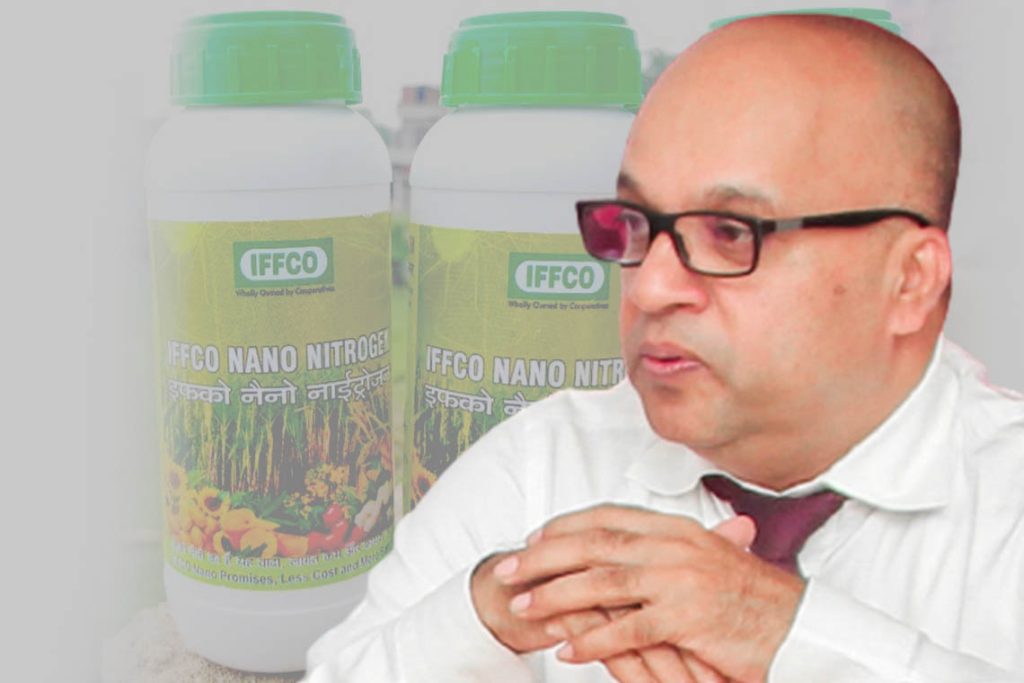Professor Saman Seneweera, a Professor of Plant Physiology at the University of Melbourne in Australia, opines that liquid nano nitrogen fertilizer imported from India to meet the fertilizer demand for the current Maha season may not be sufficient to fully satisfy the Nitrogen requirements of crops.
Prof. Seneweera responded to Lankasara, pointing out that plants have evolved to obtain the nutrients needed through their root system; therefore spray-on liquid fertilizers can only meet a fraction of the plant’s nutrient demand.
Prof. Seneweera, former Director of the National Institute of Fundamental Studies, stated that this stunt by the government, may be a temporary intervention to redirect the current crisis among farmers over the fertilizer issue. Further, he pointed out Nano Nitrogen alone will not be able to deliver the total nitrogen requirement of crops such as paddy or maize.
He further explained:
“A plant has evolved to obtain the nutrients through its root system. Accordingly, more than 90 percent of the nutrients required by the plant comes through the root system. The leaves of the plant are involved in photosynthesis and food production. ”
To put it another way, through the process of photosynthesis, leaves take in carbon dioxide to produce oxygen and food by absorbing sunlight.
Liquid fertilizer is usually applied to the leaves of crops to correct minor nutritional deficiencies. In particular, they are applied to provide the leaf with micronutrients such as magnesium, iron, copper, zinc, manganese and boron, but macro nutrients such as nitrogen, phosphorus or potassium (NPK) is not common.
Further, liquid fertilizers are mostly used after flowering, because the plant partially loses its ability to absorb nutrients afterwards,” Professor Seneweera explained. He also pointed out that liquid foliar fertilizers are predominantly used in nurseries and ornamental crops.
Sri Lanka is to import 3.1 million litres of liquid nano nitrogen fertilizer from India. Professor Seneweera estimated that the average quantity of liquid nano nitrogen fertilizer applied per Ha would be 2.5 Litres. This would mean that a maximum of 1250 grams of urea or 625 grams of nitrogen per hectare will be used.
Professor Seneweera emphasized the importance of maintaining a total nitrogen content of at least 40 kilograms (above ground) per hectare during the latter stages of growth. This amount is required to achieve the maximum yield potential in the case of rice. He further stated that even if the nano nitrogen fertilizer worked at its maximum efficiency (100% nitrogen use efficiency), it would be a miracle to fulfill the critical demand of the plant to achieve the highest yield potential. Even if rice crops are treated with nano urea on a weekly basis during the growth period, the highest yield potential will remain elusive.
Is the liquid nitrogen fertilizer brought from India a miracle cure?
“I am a long-term researcher in the field of nano fertilizers. I sought scientific and field research data on this fertilizer from the relevant manufacturer. They have no such research findings on the use of this fertilizer, i.e., large scale applications of this fertilizer and assessment of fertilizer nitrogen efficiency data is unavailable since the manufacture of this fertilizer only began in June 2021 . It is absolutely important to have stable isotope data to support the use efficiency of this fertilizer.
“Nanotechnology is a rapidly evolving technology. Efficient fertilizers produced using this technology are extensively used in developed countries. However, most of these fertilizers are applied to the root system to improve nitrogen use efficiency.
The nitrogen use efficiency of conventional urea fertilizers is 30-35%. This indicates that 65-70 percent of the nitrogen has escaped through various processes and has a significant negative impact on the environment. At the same time, the cost to get a unit of nitrogen into the plant is expensive. This is a global problem, but there are alternative solutions. All we need to do is use improved, good quality urea fertilizers produced using the latest technology, that have higher fertilizer use efficiency.
Making such hasty, thoughtless decisions based on ad – hoc planning will definitely further increase poverty among the people of this country and challenge the food security of this country, Professor Seneweera stated.
